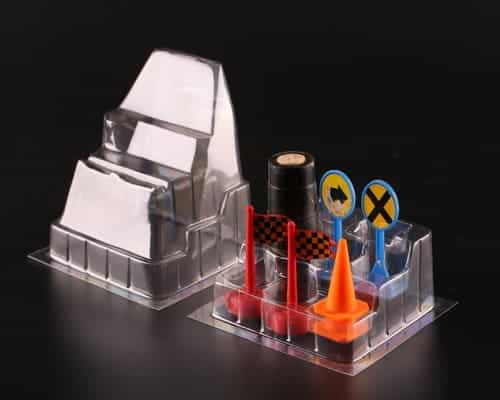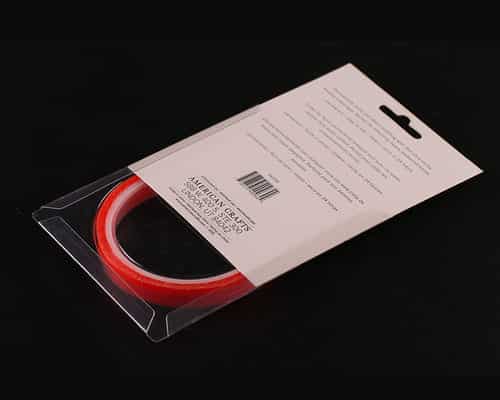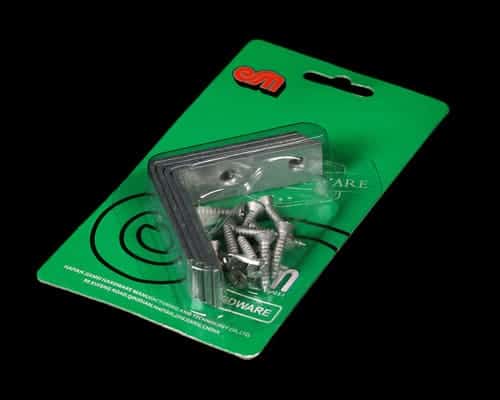BLISTER PACKAGING - WHAT IS IT AND WHY USE IT?
By Hope Chan. Last updated: July 16, 2022
Table of Contents
What Is Blister Packaging?
A blister packaging is made by heating up a sheet of plastic and molding it into custom shape so that a bubble or pocket is created to completely enclose the product inside.
Can I Use Blister Packaging on My Products?
I don’t see why not. Lots of products you see on the market are packed in blisters. Take a look and see if yours is one of them:
- Toys
- Food
- Tablets
- Tool Sets
- Batteries
- Stationery
- Electronics
- Beauty products
- Others
Blister packaging offers not only protection for your products, it also helps you achieve the visual appeal you crave as well.
How Many Types of Blister Packaging Are There?
There are more than 10 types of blister packaging types. We categorize them into 4 groups based on their features:
- Clamshell Packaging
- Carded Packaging
- Plastic Trays & Boxes
- Flocking Blister Packaging
Keep reading and see if any one of them appeals to you.
Clamshell Packaging
Basically it’s a container with 2 halves hinged together like a clam with snap-shut button for easy opening and closing.
2 custom-shaped blister packs (‘top & bottom’ or ‘front & back’ combination) put together and form a 2-Piece Clamshell.
2 halves hinged together and form a triangular bottom, which provides a solid base for products to stand upright.
Carded Packaging
It’s also known as Full Card Blister. The card and blister pack are separated and are of the same size.
A Trapped Blister is a rigid plastic blister trapped and sealed between 2 paperboard cards.
Front rigid plastic blister will be molded around the product and then heat-sealed to a single paperboard card.
It’s quite similar to Face Seal Blister. The only difference is that the blister extends to the very edge so that it’s more durable and the edge won’t be so easily bent.
A thermoformed blister tray that is put inside of an outer package so that the items contained can be well secured and protected by 2 layers of packages
Custom thermoformed blister trays that can be used to hold products.
PET/PVC/PP plastic boxes that come in all sorts of sizes, shapes and colors.
Flocking Blister Packaging
What Are the Pros & Cons of Blister Packaging?
Pros:
- Customizable
Since all plastic blister packs are thermoformed and each design is unique to the product contained, blister packs are highly customizable regardless of the size or amount of items contained.
- Cost-effective & Lightweight
Mass production of blister packaging products are quite cheap compared with other packaging solutions. And they are light, easy to transport.
- Protective & Tamper-proof
Blister packages offer good protection for the items contained and because of the way they are sealed, blister packages also discourage unauthorized opening.
- Visual Appeal
Plastic is highly malleable and can be easily molded into all sorts of forms, allowing your custom package to stand out and showcase the products contained.
Cons:
- Non-Recyclable
Not all plastic can be recycled.
- Extra Tools
In the case of Trapped Blister, Face Seal Blister and Full Face Seal Blister packaging, sealing tool is required for proper sealing of the packaging.











